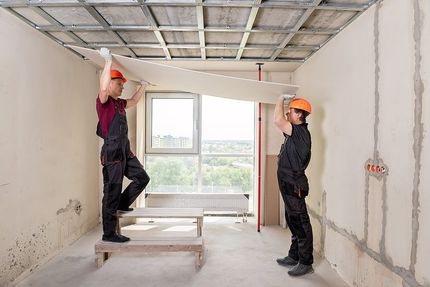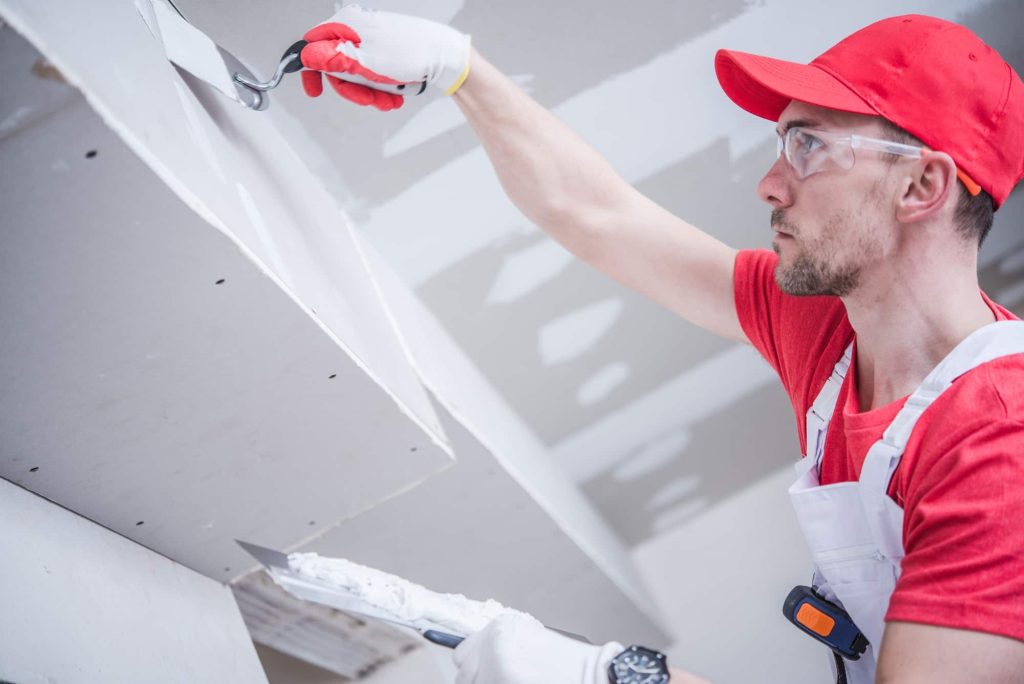Dependable Drywall Installation Solutions for every single Area
Dependable Drywall Installation Solutions for every single Area
Blog Article
Drywall Installment Facilitated: Tips for Perfect Results
Drywall setup is commonly perceived as a challenging task, yet with the right approach and understanding, it can end up being a workable venture. Understanding techniques for reducing, hanging, and finishing drywall can significantly influence the result.
Selecting the Right Materials
Picking the appropriate materials for drywall installment is critical to attaining a sturdy and visually pleasing finish. drywall repair. The key part, drywall sheets, generally come in various thicknesses, with 1/2-inch sheets being basic for interior wall surfaces. For areas requiring added wetness resistance, such as restrooms or kitchen areas, think about utilizing eco-friendly board or concrete board, which are specifically made to hold up against moisture

In addition, choosing the ideal fasteners-- either screws or nails-- is necessary for protecting the drywall to the framing. Drywall screws are normally favored for their holding power and lowered danger of standing out. Lastly, consider the complements such as guide and paint, which not only boost the look yet also protect the drywall from moisture and wear.
Preparing the Setup Location
Prior to beginning the drywall setup process, it is vital to prepare the installation area extensively. A tidy workspace decreases the risk of damage to existing products and permits for reliable motion during setup.
Next, check the wall surfaces and ceiling for any type of imperfections, such as fractures, openings, or mold. Address these problems ahead of time; patch any kind of damages and permit enough time for repair services to completely dry. Additionally, guarantee that electric outlets, buttons, and plumbing are appropriately positioned and made up, as this will affect drywall positioning.
Consider the ecological problems. A stable temperature level and humidity degree are essential for optimum attachment and performance of the drywall materials. Use a dehumidifier or heating unit to produce ideal problems. if necessary.
Trimming and Hanging Drywall
The key to reliable drywall setup exists in the precise cutting and dangling of the panels. Make use of a straight edge and an energy blade to score the drywall along your measurements, after that break it along the racked up line for a tidy break.

Always work from the top down and left to right, making sure that you preserve a staggered pattern to boost stability. Correctly hanging the drywall sets the foundation for a smooth finish, ultimately bring about remarkable outcomes in your drywall task.
Taping and Mudding Techniques
While proper cutting and hanging of drywall sets the stage, the following crucial action involves understanding taping and mudding techniques to make sure a smooth surface. Taping is vital for strengthening joints and preventing splits; it includes embedding tape into the applied joint compound (mud) Start with a top quality fiberglass or paper tape, using the tape over the joint and pressing it into the damp mud using a taping blade, making sure no air bubbles continue to be.
Once why not try this out the tape is in location, apply a slim layer of joint compound over the tape, feathering the sides to create a smooth transition to the drywall surface area. Enable this layer to completely dry totally before sanding it lightly to get rid of imperfections. Repeat this process, using added layers of mud as needed-- normally 2 to 3 coats-- while slowly expanding the application location with each layer to achieve a seamless look.
After the final layer dries, sand the surface with a fine-grit sandpaper until smooth. sheetrock repair fort worth. Remember to wear a mask during sanding to avoid breathing in dirt fragments. Understanding these taping and mudding techniques is essential for attaining a professional-quality surface in your drywall installation
Completing Touches for Perfection
Achieving a perfect drywall setup goes beyond taping and mudding; it culminates in the ending up touches that elevate the total look. These last actions are critical in ensuring a professional-grade finish that improves the visual appeals of your area.
Begin by sanding the dried joint substance to develop a smooth surface. Make use of a fine-grit sandpaper and a fining sand block or post sander for optimal control. Pay specific focus to edges and edges, as these areas tend to require even more precise work. After sanding, clean down the walls with a moist fabric to remove any type of dirt particles, ensuring a clean surface area for paint.
Next, apply a primer specifically designed for drywall. This action is essential, as it aids secure the joint substance and provides an uniform base for the overcoat. When the primer dries, check for any kind of imperfections, and touch up as needed.
Conclusion
In final thought, successful drywall installation pivots on the mindful selection of products, extensive prep work of the installment area, and exact implementation of cutting and hanging strategies. Mastery of taping and mudding next procedures is important for accomplishing a smooth coating.
Drywall setup is typically perceived as an overwhelming job, yet with the best technique and expertise, it can become a manageable endeavor.Picking the appropriate materials for drywall installation is crucial to achieving a durable and cosmetically pleasing coating.Prior to beginning the drywall installation process, it is essential to prepare the setup location thoroughly. Understanding these taping and mudding techniques is critical for attaining a professional-quality coating in your drywall setup.
In final thought, effective drywall setup hinges on the cautious selection of products, thorough preparation of the setup location, and accurate execution of reducing and hanging strategies.
Report this page